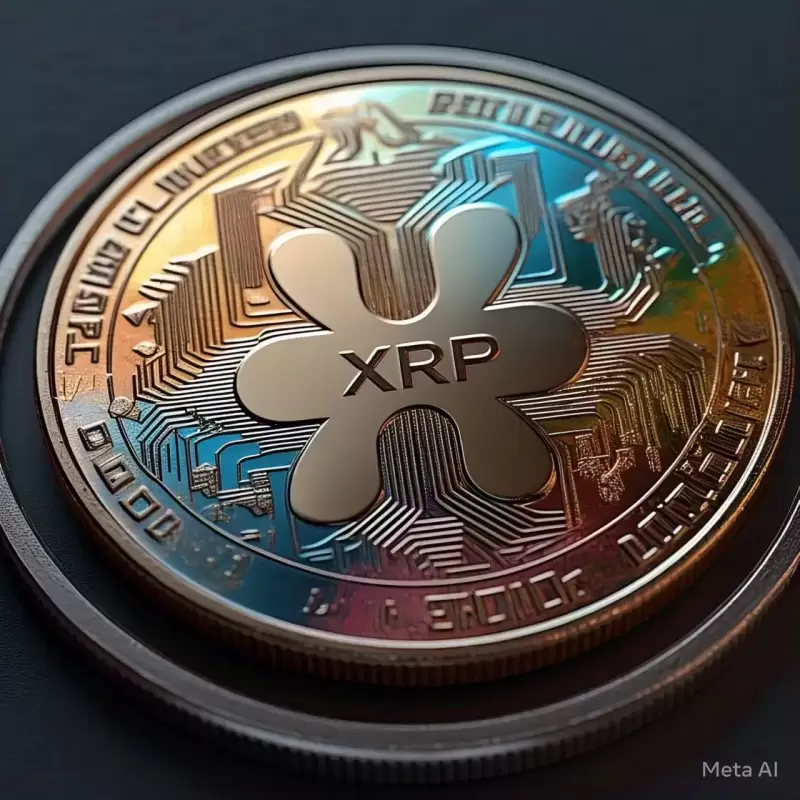 |
|
 |
|
 |
|
 |
|
 |
|
 |
|
 |
|
 |
|
 |
|
 |
|
 |
|
 |
|
 |
|
 |
|
 |
|
現在想像一下,在中央銀行的走廊上進行的談話迴盪,那裡的賭注是一個缺少本世紀最不對稱的財務機會之一的國家。

If you're reading this, chances are you've encountered the familiar refrain at a dinner party: "Oh, if only we had bought Bitcoin ten years ago." Now imagine that conversation echoing in the corridors of a central bank, with the implications of a nation missing one of the most asymmetric financial opportunities of the century.
如果您正在閱讀這篇文章,那麼您很可能會在晚宴上遇到熟悉的避免:“哦,如果我們十年前我們才購買了比特幣。”現在想像一下,在中央銀行的走廊上迴盪的談話,一個國家缺少本世紀最不對稱的財務機會之一的含義。
For emerging economies — nations like India, Brazil, Indonesia, South Africa, Nigeria, Thailand, or Vietnam — strategic exposure to cryptocurrencies is crucial for future economic resilience. Together, they represent over 40% of the global population and about 25% of global GDP. However, they remain susceptible to external economic shocks, including currency fluctuations, trade disruptions, and more.
對於新興經濟體 - 印度,巴西,印度尼西亞,南非,尼日利亞,泰國或越南的國家 - 戰略性暴露於加密貨幣對未來的經濟彈性至關重要。它們共同佔全球人口的40%以上,約佔全球GDP的25%。但是,它們仍然容易受到外部經濟衝擊的影響,包括貨幣波動,貿易中斷等。
Today, their sovereign reserves are heavily concentrated in traditional assets like gold and foreign exchange. But those won't provide sufficient hedges in a rapidly digitizing world.
如今,他們的主權儲量重點集中在黃金和外匯等傳統資產上。但是這些不會在快速數字化的世界中提供足夠的對沖。
Cryptocurrencies aren't an experiment anymore. While Bitcoin is the most widely adopted, making it the primary example in this discussion, the broader argument applies to cryptocurrencies as a whole. The Bitcoin network has been operational for over 99.98% of the time since its inception in 2009. They've survived wars, regulatory crackdowns, and multiple financial crises. Over the last decade, bitcoin has appreciated nearly 200X, far outpacing tech giants like NVIDIA or Apple.
加密貨幣不再是實驗。雖然比特幣是最廣泛的採用,這是本討論中的主要例子,但更廣泛的論點適用於整個加密貨幣。自2009年成立以來,比特幣網絡已有99.98%的時間運作。他們在戰爭,監管鎮壓和多種金融危機中倖存下來。在過去的十年中,比特幣讚賞近200倍,超過了Nvidia或Apple等技術巨頭。
The crypto space, it's no secret, has also faced scams, rug pulls, and bad actors. But that's common in virtually any financial system—think of early stock markets or banking. That's why smart regulation is critical. Countries like Singapore, Japan, and Switzerland have already struck a balance between consumer protection and innovation, offering models for others. But these risks don't negate crypto's core appeal—they demand careful governance.
加密貨幣空間也不是秘密,也面臨著騙局,地毯拉力和壞演員。但這在幾乎任何金融體系中都是常見的 - 早期股票市場或銀行業務。這就是為什麼智能法規至關重要的原因。新加坡,日本和瑞士等國家已經在消費者保護和創新之間取得了平衡,為他人提供了模型。但是,這些風險不會否定加密貨幣的核心吸引力 - 他們需要仔細的治理。
Diversification is key. Ask any central banker, fund manager, or financial advisor: you don't put all your eggs in one basket, and you certainly don't bet the future of an economy on a single asset class. In a world that's rapidly digitizing, ignoring digital assets like cryptocurrencies is a mistake. These assets tend to have little correlation with how other traditional assets perform, making bitcoin a strong hedge against economic turbulence.
多樣化是關鍵。詢問任何中央銀行,基金經理或財務顧問:您不會將所有雞蛋放在一個籃子裡,並且您當然不會在單一資產類別上押注經濟的未來。在一個快速數字化的世界中,忽略像加密貨幣這樣的數字資產是一個錯誤。這些資產往往與其他傳統資產的表現幾乎沒有相關性,這使得比特幣成為反對經濟動蕩的強烈樹籬。
We're already seeing entire publicly listed companies built around bitcoin as a core asset. Take Michael Saylor's Strategy, which started as a software firm and now holds over 506,137 BTC (approximately $42 billion as of writing). Countries like El Salvador have adopted Bitcoin as legal tender. Vietnam, India, and Thailand rank among the top 10 countries globally for cryptocurrency adoption already. EAEs must follow this shift or fall behind.
我們已經看到整個圍繞比特幣建立的公開上市公司是核心資產。以邁克爾·塞勒(Michael Saylor)的策略為例,該策略最初是一家軟件公司,現在持有506,137 BTC(截至寫作,約為420億美元)。像薩爾瓦多這樣的國家已將比特幣作為法定貨幣。越南,印度和泰國已經在全球採用加密貨幣方面排名全球十大國家。伊斯必須跟隨這種轉變或落後。
Bitcoin isn't the new digital gold—it serves a very different role. In many cultures, more so in mine, we Indians love our gold. We hoard it, gift it, and trust it as a store of value. Central banks across the world have been buying gold at a record pace in recent years. But gold wasn't always the safe bet we think it is today—back in the 1980s, its price crashed by 60% before bouncing back.
比特幣不是新的數字黃金,它發揮了截然不同的作用。在許多文化中,在我的更多文化中,我們印第安人喜歡我們的黃金。我們ho積它,贈予它並相信它是價值存儲。近年來,全球中央銀行一直以創紀錄的速度購買黃金。但是,黃金並不總是我們認為今天的安全賭注 - 在1980年代的返還,其價格跌倒了60%,然後反彈。
Bitcoin brings new utility: it can be transferred anywhere in the world in minutes, divided into microscopic fractions, and secured with cryptographic protocols. Gold and Bitcoin share fundamental traits—they're scarce, resilient, and hedge against uncertainty—but gold preserves value traditionally, while bitcoin expands possibilities digitally. They don't replace each other; they work together.
比特幣帶來了新的實用程序:可以在幾分鐘內將其轉移到世界任何地方,分為微觀分數,並使用加密協議固定。黃金和比特幣具有基本特徵(它們稀缺,有彈性和防樹籬,反對不確定性),但黃金傳統上保留了價值,而比特幣則以數字方式擴展了可能性。他們不會互相替代;他們一起工作。
Critics often dismiss crypto as mere speculation, but its utility is real. Major companies like Microsoft and Starbucks now accept bitcoin and stablecoins for transactions. U.S. bitcoin ETFs have attracted over $12 billion in institutional inflows within months. Crypto enables faster, cheaper remittances, cutting global fees from 6.4% to under 1%, saving billions for developing economies. With over $100 billion locked in DeFi protocols, it's clear that the future of finance is already being built on blockchain.
批評者通常將加密貨幣視為僅僅是猜測,但其效用是真實的。現在,微軟和星巴克等主要公司接受比特幣和Stablecoins進行交易。美國比特幣ETF在幾個月內吸引了超過120億美元的機構流入。加密貨幣可以更快,更便宜,將全球費用從6.4%降低到1%以下,為發展中的經濟體節省了數十億美元。憑藉超過1000億美元的規定,很明顯,財務的未來已經建立在區塊鏈上。
Emerging economies should take a strategic, forward-looking step toward economic resilience. A 1-2% allocation in digital assets is smart, not a gamble. Track its performance, take cues from early movers like the U.S., El Salvador, and Strategy, and refine the approach as you go. Encourage financial institutions to experiment with crypto-backed financial instruments in a limited way. Proactive regulatory frameworks are vital to foster innovation while ensuring stability.
新興經濟體應朝著經濟韌性邁出戰略性,前瞻性的一步。數字資產的1-2%分配是聰明的,而不是賭博。跟踪其性能,從美國,薩爾瓦多等早期推動者和策略中獲取線索,並在您走時完善方法。鼓勵金融機構以有限的方式嘗試使用加密支持的金融工具。積極的監管框架對於促進創新至關重要,同時確保穩定。
Countries must position themselves for the future. Holding digital assets reduces reliance on external financial systems and insulates them from geopolitical and monetary shifts. We've seen this playbook before—these countries weren't the first to embrace digital payments, yet they built world-class infrastructure like India's UPI, Brazil's PIX, and Nigeria's NIBSS. The same leadership is possible in crypto reserves. With the global crypto market nearing $3 trillion
國家必須為未來定位自己。持有數字資產可以減少對外部金融系統的依賴,並使他們擺脫地緣政治和貨幣轉變。我們之前曾看過這本劇本 - 這些國家不是第一個接受數字付款的國家,但他們建立了世界一流的基礎設施,例如印度的UPI,巴西的Pix和尼日利亞的努力。加密儲備中也可以使用同樣的領導。隨著全球加密市場接近3萬億美元
免責聲明:info@kdj.com
所提供的資訊並非交易建議。 kDJ.com對任何基於本文提供的資訊進行的投資不承擔任何責任。加密貨幣波動性較大,建議您充分研究後謹慎投資!
如果您認為本網站使用的內容侵犯了您的版權,請立即聯絡我們(info@kdj.com),我們將及時刪除。
-

- Vaulta銀行諮詢委員會觸發EOS價格集會至2個月高
- 2025-04-02 14:30:12
- EOS網絡已公佈了Vaulta銀行諮詢委員會,此舉使EOS價格提高了16%
-

- XRP價格預測:XRP是否會從此關鍵支持級別中反彈或分解?
- 2025-04-02 14:30:12
- 最近幾週,加密貨幣市場一直高度波動,在更廣泛的宏觀經濟不確定性的情況下,Altcoins經歷了重大波動。
-

- 比特幣不僅是價格過山車。這也是一個活的生態系統
- 2025-04-02 14:25:12
- 人權基金會(HRF)發布了1000000000 satoshis,以支持比特幣項目。
-

-

-

- Binance的現貨市場優勢提高了BNB價格,為突破奠定了基礎
- 2025-04-02 14:20:12
- 加密貨幣市場啟動了4月的看漲票據,比特幣嘲笑了85,000美元的另一個突破。雖然這種上升不足以改變市場動態
-

-

- PEPE(PEPE) - 以$ 0.00000750的價格購買蘸醬,以$ 0.00000830獲利
- 2025-04-02 14:15:12
- 基於此圖表,波紋管和貿易設置:
-

- 模因硬幣狗幣(Doge)在白天飆升
- 2025-04-02 14:10:12
- Dogecoin(Doge)白天正在飆升。截至KST上午7:18,Doge的交易價格為0.1736美元,比前一天增長了5.39%。





























































